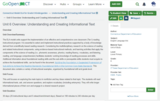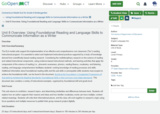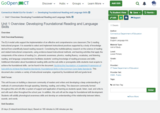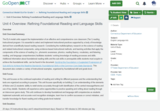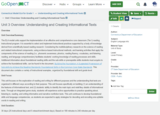CSDE Model Curricula Quick Start GuideImplementing the K-3 ELA Model CurriculumEquitable and Inclusive Curriculum The CSDE believes in providing a set of conditions where learners are repositioned at the center of curricula planning and design. Curricula, from a culturally responsive perspective, require intentional planning for diversity, equity, and inclusion in the development of units and implementation of lessons. It is critical to develop a learning environment that is relevant to and reflective of students’ social, cultural, and linguistic experiences to effectively connect their culturally and community-based knowledge to the class. Begin by connecting what is known about students’ cognitive and interdisciplinary diversity to the learning of the unit. Opposed to starting instructional planning with gaps in students’ knowledge, plan from an asset-based perspective by starting from students’ strengths. In doing so, curricula’s implementation will be grounded in instruction that engages, motivates, and supports the intellectual capacity of all students.The Science of Reading and the Grades K-3 English Language Arts Model Curriculum Curriculum is the central roadmap for communicating essential learning outcomes for mastery by the end of a grade or grade band. The K-8 English Language Arts Model Curriculum units serve to support districts in delineating how teachers will organize their instruction and teach to develop skills and content knowledge and assess students’ ability to transfer learning. Furthermore, the CSDE’s model curriculum for Grades K-3, inclusive, aligns with the findings of the body of knowledge called the science of reading and the complementary theoretical frameworks (i.e., The Simple View of Reading and Scarborough’s Reading Rope). These frameworks explain the development of reading and the many subskills that contribute to skilled reading. The Science of Reading Defined“The science of reading is a vast, interdisciplinary body of scientifically-based research about reading and issues related to reading and writing. This research has been conducted over the last five decades across the world, and…has culminated in a preponderance of evidence to inform how proficient reading and writing develop…and how we can most effectively assess and teach and, therefore, improve student outcomes through prevention of and intervention for reading difficulties.” 1 The Grades K-3 English Language Arts Model Curriculum units present the foundational skills that students must develop to become, and improve, as readers. The units are organized and presented in a manner that supports the development of the interrelated skills that contribute to skilled reading. Through purposeful interactions, students must actively engage in rigorous conversations, refine speaking and listening skills, and build their knowledge of language structures in preparation for the advanced intellectual work required for both listening and reading comprehension. With a carefully arranged sequence of standards within and across the K-3 grade band, the model units present the complex multidimensional nature of the language system, incorporating language components (i.e., phonology, morphology, semantics, syntax, pragmatics) and literacy components (i.e., phonological awareness, alphabetic principle, phonics, fluency, vocabulary, reading comprehension) for reading acquisition. The Science of Reading: How Children Learn to Read and How They Should Be TaughtThe role of instruction and practice, and the emphasis placed on them, emerged after research conducted over a couple of decades was synthesized to reveal that explicit and systematic instruction was key to students acquiring fundamental skills. Together with teachers’ knowledge of scientific research that has shown us how children learn to read and how they should be taught, districts and schools can facilitate students’ proficient acquisition of fundamental reading skills. Although knowing the science of reading is crucial, it is not enough. Educators must understand the various aspects of culture, including identifying a student’s first language if it is not English, understanding how a student’s first language is structurally different from English, determining why students miss school and if there are trauma impacts, as well as many other unnamed variables. Knowing these factors can help support students and their families in ways beyond reading instruction, and in doing so, learning to read may become easier.1 Science of Reading Defining Guide. (The Reading League, 2022), 6.1. Science of Reading Defining Guide (The Reading League,2022),6. Course Description: In the English Language Arts Model Curriculum, there is a proportional emphasis on informational and literary texts and writing types across the grade levels. In addition to developing students’ abilities to read and comprehend a variety of texts, it is equally important to devote adequate time to engage students in producing clear and coherent writing. Included in each of the units are the Speaking and Listening Standards and the Language Standards, which are essential for supporting the development of reading and writing skills and abilities. Through purposeful interactions, students will actively engage in rigorous conversations, refine speaking and listening skills, and build their knowledge of language structures in preparation for the advanced intellectual work required for both listening and reading comprehension, and writing demands in subsequent grades, including writing about their reading. The Grade 1 Reading Foundational Standards are included in each of the instructional units, most of which are categorized as Priority Standards, to support the development of students’ emergent reading and writing skills. The scope and sequence of the prioritized foundational reading skills are to be determined at the lesson level. Many of the skills foundational to language development are prioritized in each of the instructional units to stress the interconnectedness of the development of sentence structure, spelling, vocabulary, and writing. By the end of Grade 1, students will have learned to implement automatic and accurate word recognition strategies, how to confirm successes or correct mistakes when reading, and use their foundational reading skills and knowledge for the fluent reading and writing of grade-level material. In the area of writing, students must have clear and ambitious goals, be acknowledged for their accomplishments, and engage in the process of receiving feedback on their writing progress.Aligned Core Programs: Aligned Core Programs: The Connecticut State Department of Education (CSDE) in partnership with the State Education Resource Center has engaged with providers of high-quality instructional resources to develop alignment guidance for the CSDE English Language Arts (ELA) Model Curriculum. The guidance documents provide information about how instructional content aligns with and supports the implementation of the ELA Model Curriculum. Instructional materials referenced in the alignment guidance documents meet the expectations of Connecticut legislation and the PreK–3 Reading Connecticut Review Process to Evaluate Curricula and Programs, and Compendiums of Curriculum Models or Programs. Additional Course Information: Incorporated in each of the English Language Arts Model Curriculum units are the Writing Standards, with the expectation that adequate instructional time will be devoted to engaging students in producing and publishing various types of writing. Students need time to perform the intellectual work required for composing, which includes talking about their ideas, analyzing information, and organizing and presenting thoughts precisely and accurately. Developing the ability to analyze author’s craft requires multiple opportunities to engage with texts, so that students can apply literary devices and techniques in writing and make decisions around text structure and language use. When considering writing instruction, it is essential to give attention to the language skills (e.g., spelling, vocabulary, background knowledge, syntax) that directly contribute to writing production. Although writing needs dedicated instructional time, each unit supports an integrated approach to writing instruction by including complementary Speaking and Listening Standards, and Language Standards in service to the writing demands called for in each unit.Students will benefit from additional guidance during writing instruction, especially when spelling, word choice retrieval, fluently generating ideas, and executive functions are challenging. For example, working at the sentence level can help students develop the skills to compose complete compound and complex sentences, and use coordinating, correlative, and subordinating conjunctions in their writing. Sentence expansion activities can support students in writing with greater precision and accuracy. To produce lengthier pieces of writing, students may need support working through the planning and prewriting stages of the writing process and applying specific writing strategies. We must also be mindful of how executive function influences a writer’s capacity to work through the multiple steps and tasks of composing text, and the ability to sustain tasks and efforts to produce the many forms of writing. Navigating linguistically complex texts when conducting research projects and understanding and managing selective attention demands, including in working memory, may require additional scaffolds.Habits of Mind/SEIH/Transferable Skills Addressed in the Course: The integration of social, emotional, and intellectual habits is an important component in a K-12 education and contributes to students’ academic and personal success, and success in college, careers, and civic life. Social, emotional, and intellectual habits set the stage for all future learning, promoting intrapersonal, interpersonal, and cognitive competence. Adult beliefs and mindsets, as well as school experiences, all influence the development of social, emotional, and intellectual competencies (The Education Trust). Since adults are responsible for establishing and sustaining student-centered, inclusive learning environments, they must first take stock of their strengths for establishing and maintaining healthy relationships with adults and students, including individuals across different perspectives and backgrounds (Collaborative for Academic, Social, and Emotional Learning [CASEL], n.d.). By understanding and applying social, emotional, and intellectual habits, students effectively negotiate daily tasks and challenges. Social, emotional, and intellectual habits assist students in setting and achieving positive goals, establishing and maintaining healthy relationships, and making responsible decisions. In addition, they support students’ ability to maintain focus and manage their learning irrespective of obstacles. Students must have the capacity to integrate social, emotional, and intellectual skills, attitudes, and behaviors throughout the course of the day.Embedded within each of the English Language Arts Model Curriculum units are the interrelated social, emotional, and intellectual habits, as provided in the Components of Social, Emotional and Intellectual Habits: Kindergarten through Grade 12 document. These habits, over time, will contribute to students’ academic and personal success and are exemplified as areas of development (e.g., identify and understand emotions of self and others; develop logic and reasoning), further organized by learning continua (e.g., empathy; critical and analytical thinking), and clarified by categories of indicators of evidence or developmental milestones (e.g., acknowledge needs of others and act accordingly; agree or disagree with others and give reasons why). By understanding how respect, empathy, responsible behavior, and other social, emotional, and intellectual habits support rapport building, educators can foster trusting relationships with and among students so that each student feels connected and cared for as a member of the classroom community. This sets the stage for all future learning by minimizing the types of social interactions that can activate threats in the brain and impede students’ sense of agency. Students are then empowered to practice self-management and other skills and competencies within their social context (Hammond, 2015).Collaborative for Academic, Social, and Emotional Learning (CASEL). (n.d.). How Does SEL Support Educational Equity And Excellence?: Imagine A School Community That Fully Supports Students’ Learning And Development So That All Children Can Thrive. Fundamentals of SEL Hammond, Z. (2015). Culturally Responsive Teaching and the Brain: Promoting Authentic Engagement and Rigor among Culturally and Linguistically Diverse Students. Thousand Oaks, CA: Corwin.The Education Trust. (August 2020). Social, Emotional, and Academic Development through an Equity Lens.


